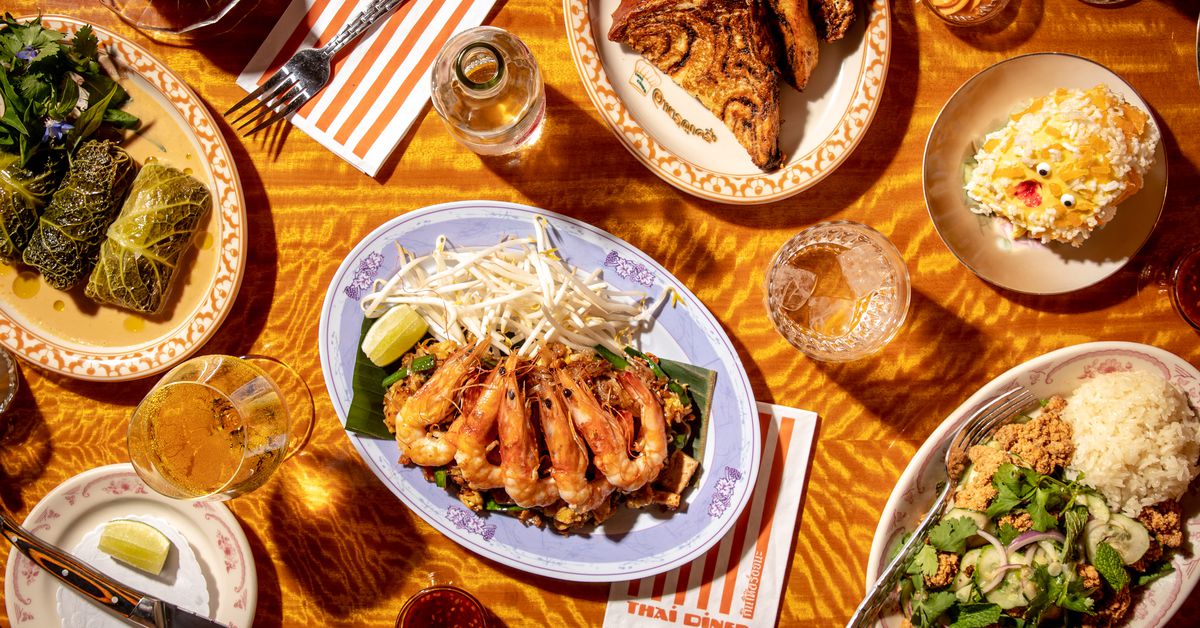Introduction
Thai cuisine is renowned worldwide for its harmonious balance of flavors—spicy, sweet, sour, salty, and umami. Whether it’s the fiery heat of chili peppers, the refreshing zest of lemongrass, or the rich creaminess of coconut milk, Thai food is a culinary experience like no other. Amidst the growing popularity of Thai cuisine, Thai diners have emerged as a beloved spot for food lovers looking for authentic and delicious Thai dishes.
A Thai diner is not just a place to eat; it is an experience that takes customers on a journey through Thailand’s culinary traditions. From street food-inspired dishes to royal Thai cuisine, these establishments offer a diverse menu that caters to all palates. In this article, we will delve into the history, signature dishes, ambiance, and cultural significance of a Thai diner.
The History of Thai Diners
Thai cuisine has deep historical roots, influenced by neighboring countries such as China, India, and Malaysia. Traditional Thai food incorporates ingredients and cooking techniques from these regions while maintaining its own unique identity. The concept of a Thai diner emerged as an extension of the country’s rich food culture, blending the charm of a casual eatery with the sophistication of fine Thai dining.
In Thailand, street food vendors and family-run restaurants have long been the backbone of the culinary scene. However, as Thai food gained international recognition, Thai diners started popping up in various cities worldwide. These diners aim to provide an authentic Thai dining experience, combining traditional recipes with modern twists to appeal to global audiences.
Signature Dishes of a Thai Diner
A Thai diner typically boasts an extensive menu that includes a mix of appetizers, main courses, desserts, and beverages. Some of the most popular dishes you’ll find in a Thai diner include:
1. Pad Thai
Pad Thai is arguably the most famous Thai dish worldwide. Made with stir-fried rice noodles, eggs, tofu or shrimp, bean sprouts, and crushed peanuts, this dish perfectly encapsulates the balance of flavors in Thai cuisine. A squeeze of lime and a sprinkle of chili flakes add an extra layer of taste, making it a favorite among diners.

2. Tom Yum Soup
Tom Yum soup is a hot and sour Thai soup that bursts with bold flavors. It is typically made with shrimp, lemongrass, galangal, kaffir lime leaves, and chili paste. This soup is a staple in Thai diners due to its invigorating and aromatic taste.
3. Green Curry (Gaeng Keow Wan)
Thai green curry is a creamy and mildly spicy dish made with green chili paste, coconut milk, Thai basil, and tender meat (chicken or beef). It is usually served with jasmine rice, allowing diners to soak up the rich, flavorful curry.
4. Som Tam (Papaya Salad)
Som Tam is a refreshing salad made from shredded green papaya, tomatoes, peanuts, dried shrimp, lime juice, and fish sauce. The combination of crunch, spice, and tanginess makes it a must-try dish at any Thai diner.
5. Mango Sticky Rice
A classic Thai dessert, mango sticky rice consists of glutinous rice soaked in coconut milk, served with ripe mango slices and drizzled with sweet coconut sauce. It is a simple yet incredibly satisfying dish that is often enjoyed after a spicy meal.
The Ambiance of a Thai Diner
A Thai diner offers more than just food; it provides an immersive cultural experience. The ambiance of a Thai diner is often inspired by traditional Thai elements, featuring wooden furniture, warm lighting, and decorations that reflect Thailand’s rich heritage.
Many Thai diners incorporate elements such as:
- Traditional Thai Art and Decor: Murals depicting scenes from Thai mythology or landscapes.
- Ornate Tableware: Blue and white porcelain dishes or coconut shell serving bowls.
- Thai Music: Soft instrumental music or contemporary Thai pop to enhance the dining atmosphere.
- Friendly Service: Thai hospitality is well-known, and servers in Thai diners often greet guests with a warm “Sawadee ka/khrub” (hello) and a friendly smile.
Cultural Significance of Thai Diners
Thai diners play a crucial role in promoting and preserving Thai culture, especially in countries where Thai cuisine is not as well known. They serve as a gateway for people to experience Thailand’s food traditions without having to travel to the country.
Moreover, Thai diners help support Thai farmers and producers by using authentic Thai ingredients such as jasmine rice, fish sauce, and Thai basil. Many restaurants also collaborate with local Thai communities, contributing to the global recognition of Thailand’s culinary heritage.
The Rise of Thai Diners Worldwide
The growing popularity of Thai diners can be attributed to the increasing appreciation for Thai cuisine worldwide. Cities like New York, London, and Sydney are home to some of the best Thai diners, attracting food lovers who crave authentic Thai flavors.

The appeal of Thai diners lies in their ability to offer high-quality, flavorful food at affordable prices. Unlike high-end Thai restaurants, diners provide a casual and relaxed dining experience without compromising on authenticity. This makes Thai diners a go-to spot for both locals and tourists.
Conclusion
A Thai diner is more than just a place to eat—it is a celebration of Thailand’s rich culinary heritage. From iconic dishes like Pad Thai and Tom Yum soup to the warm and welcoming ambiance, Thai diners provide an authentic taste of Thailand to food enthusiasts worldwide.
Whether you are a seasoned fan of Thai cuisine or a newcomer eager to explore new flavors, visiting a Thai diner is a delightful experience that promises a perfect blend of taste, tradition, and hospitality. So, the next time you crave a meal that is both comforting and exciting, step into a Thai diner and embark on a delicious journey through Thailand’s vibrant food culture.
